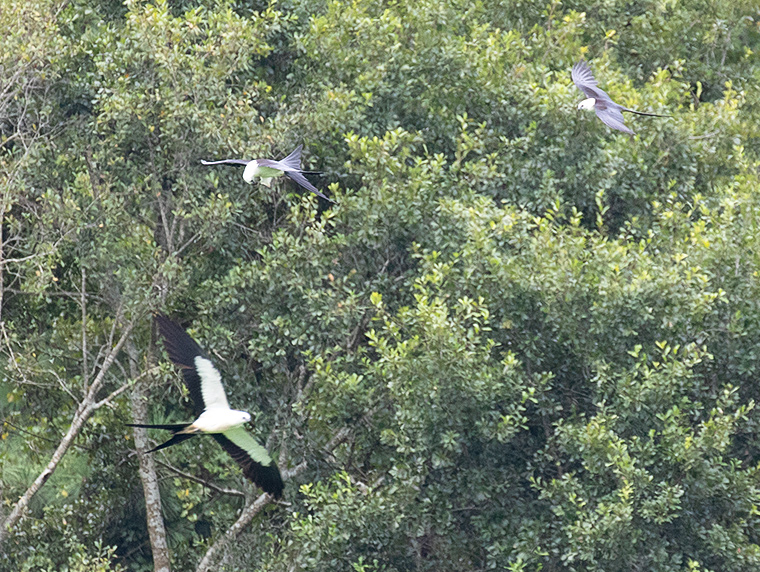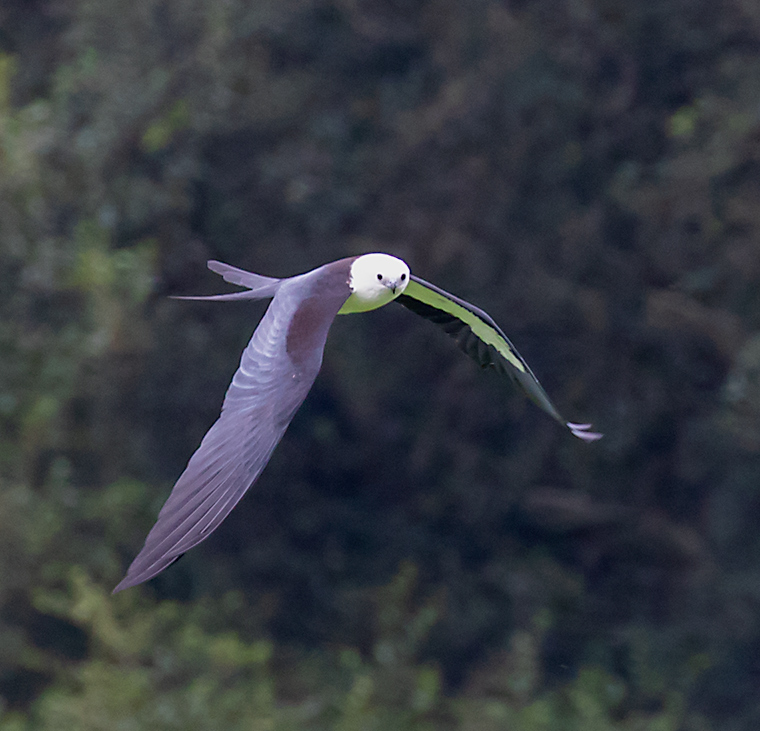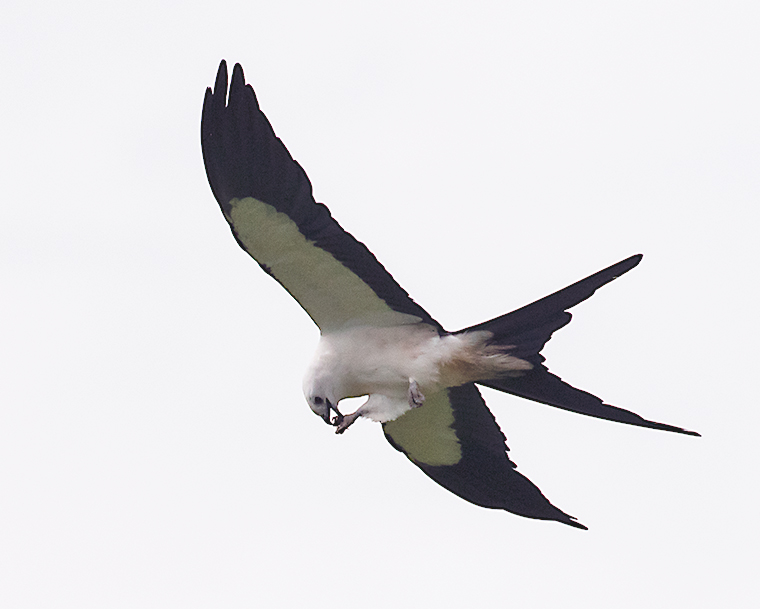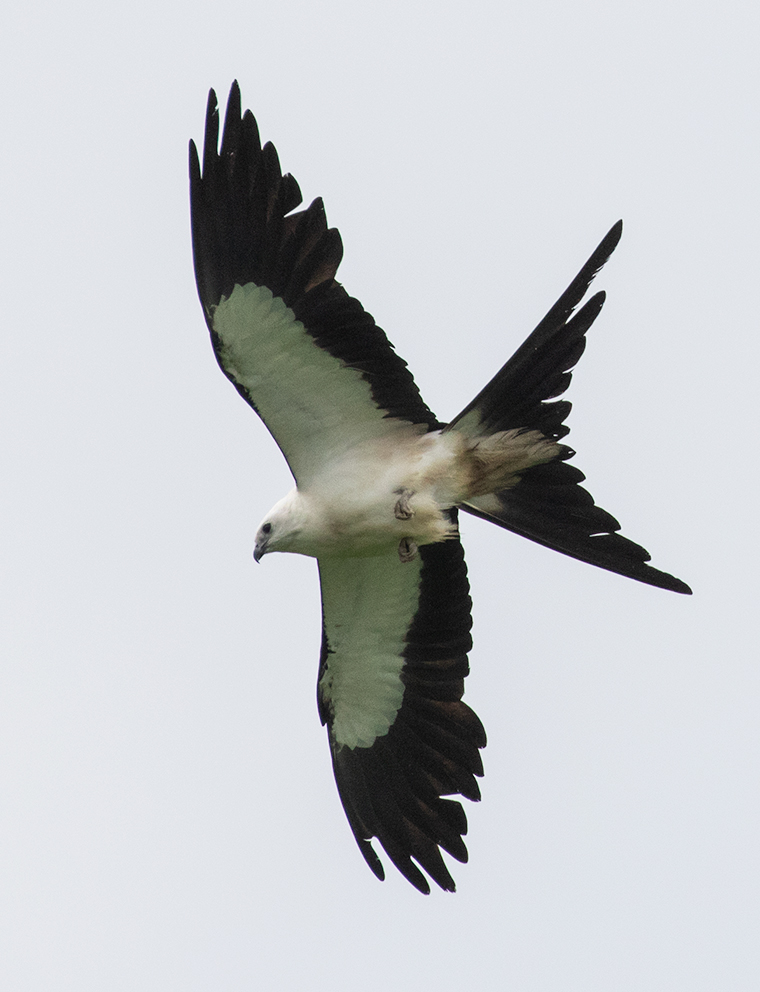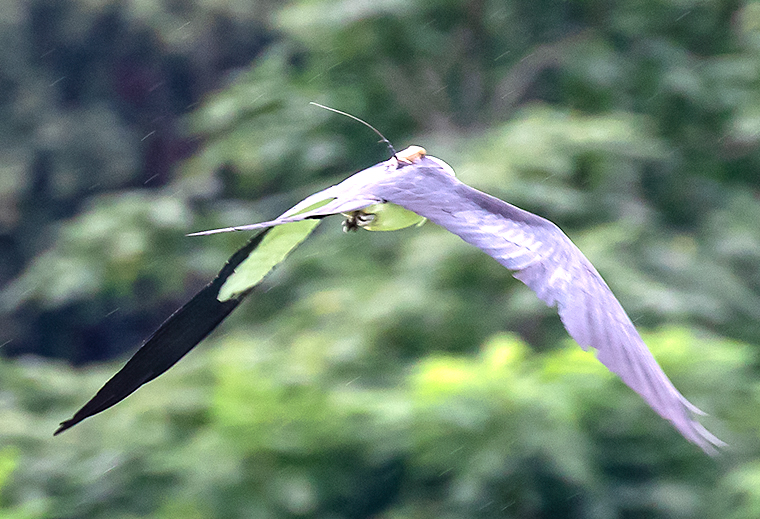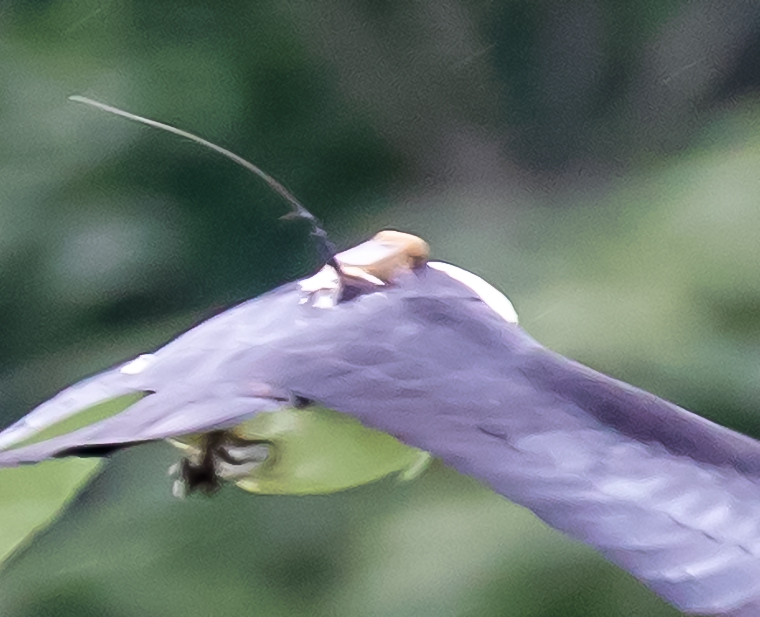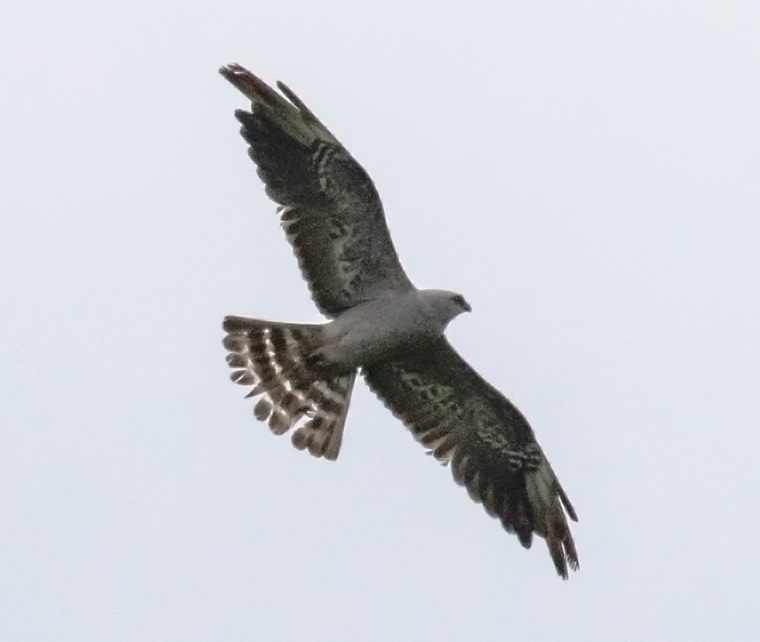In August, 2015, we went to Long County, Georgia to see the wonderful display put on by Swallow-tailed Kites (Elanoides forficatus) and Mississippi Kites (Ictinia mississippiensis) as they gather prior to migration. We posted photographs and text from this visit in two earlier blog posts. They are https://www.gkochert.com/two-types-of-kites/ and https://www.gkochert.com/kites-versus-beetles/ We had a really nice day for that visit, and the birds put on an amazing show.
Yesterday we had one free day, so we went to Long County again. This time the weather was not good, and after a late start, we arrived late in the day (about four p.m). The Kites have usually dispersed by this time, according to Mr. Skeen, who very generously allows birders to come on his land. However, we were lucky in that some Kites were still active. About 30 Swallow-tailed Kites were soaring low over one of Mr. Skeen’s fields, catching insects on the wing, and eating them in flight. As with our earlier visit, the main prey item seemed to be June Bugs (Cotinus nitida).
Although the weather was not optimal for photography, we naturally took some photographs, These are presented below with some brief comments. Please consult the earlier blog posts I listed above for additional information and more photographs and information about the Kites.
In this photograph, the middle Kite is eating something held on one of its feet.
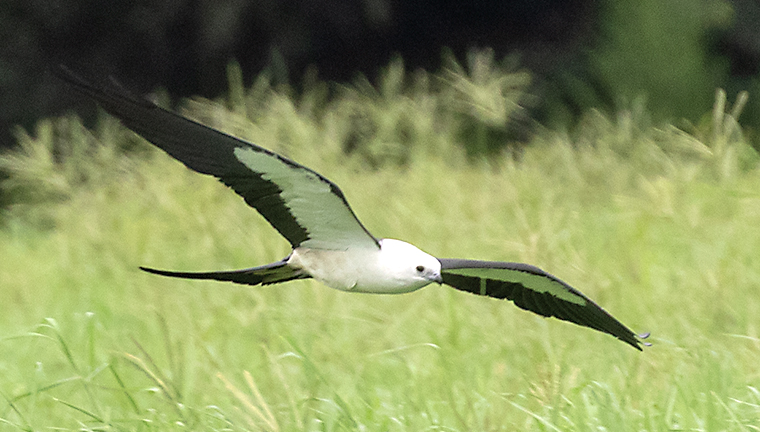 The photographs above show Kites flying low over the field.
The photographs above show Kites flying low over the field.
This one seemed to be looking us over!
The Kites feed by swooping low over the field and seizing their prey in one foot. In this case they seemed to be eating June Bugs, but dragonflies would be in grave danger were they to fly over the field.
This Kite is wearing a tracking device. This probably contains a GPS system so that some researcher can track this bird’s location over time, perhaps to trace its migration route.
A closer, and somewhat noisy, photograph of the transmitter on the Kite’s back.
We saw only one Mississippi Kite this trip.
According to etymonline.com “The toy kite, a light frame covered with paper or cloth, is first so-called 1660s, from its way of hovering in the air like a bird”. So the toy kite was named after the bird. Whatbird.com tells us that the scientific name of the Swallow-tailed Kite, Elanoides forficatus, comes from a Latin-Greek hybridization of the words “elanus”, meaning a kite; “eidos”, meaning to resemble or be similar to; and “forfex”, for scissors, which refers to the forked tail.
I tried to discover if there was a collective term for a group of kites (the birds), but there appears to be no single term which is universally agreed upon, Among those proposed were “wake”, “kettle”, “swarm”, “husk” and “soar”. I liked “wake” the best, hence the title of this post.

